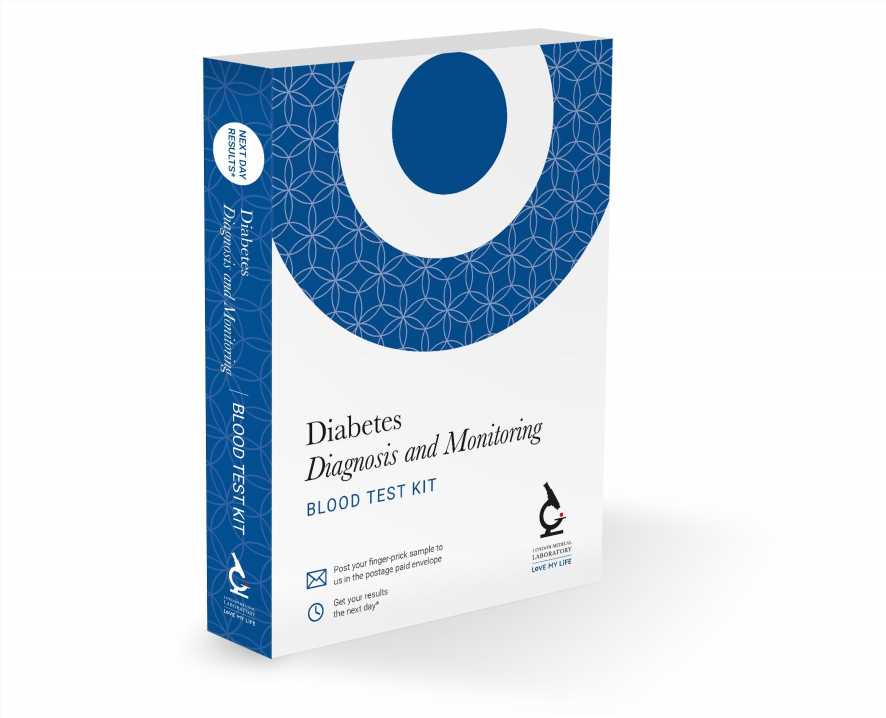 Reviewed
ReviewedItchy skin, tingling hands or slow-healing cuts may signal hidden diabetes

 Reviewed
Reviewed
Everyday skin problems could have a more sinister cause, warns a blood testing expert. Itchy skin, tingling hands or a cut that takes a while to heal are usually given a quick scratch or a sticking plaster. However, they are also little-known symptoms of type 2 diabetes.

London Medical Laboratory’s latest analysis reveals one million people in the UK are likely to have undiagnosed type 2 diabetes. It has launched a campaign to fight this invisible killer, which can shorten lives by up to ten years. ‘Give the finger to diabetes’ aims to identify undiagnosed cases with a simple fingerprick blood test. In 2019, there were almost 14,000 diabetes-related deaths in the UK. The earlier people are diagnosed, the better the outcome.
Leading blood testing expert, Dr Avinash Hari Narayanan (MBChB), Clinical Lead at London Medical Laboratory, says: ‘The chances are your itchy skin is down to dryness, that tingling feeling is because you sat in an odd position and that cut that refuses to heal is because it has been covered by a plaster for too long. However, that may not be the case.
‘We know Britain currently has 4.3 million registered diabetics, but it’s likely a million more Brits may have the disease without knowing it. And what seems like a stubborn skin irritation may be your body warning you. Medical professionals are increasingly aware that seemingly harmless skin conditions could be a symptom of type 2 diabetes.
Dry, itchy skin:
‘Poor circulation can cause skin dryness and itchy skin and diabetes could well be the cause. Chronic high blood sugar (glucose) levels affect blood circulation by damaging the lining of your small blood vessels, which impedes circulation.
‘Similarly, this can also be seen in the development of peripheral arterial disease (PAD) in diabetic patients. It’s believed 1 in 3 people over age 50 with diabetes may have PAD. Fatty deposits adhere to unhealthy blood vessels in the lower limbs, leading to blood vessel narrowing and circulation issues. This is often a cause of poor-healing wounds, nerve damage and even “limb ischaemia” (a severe blockage of the arteries), leading to a risk of amputation.
‘Additionally, abnormal sensations that can be perceived as itches, or an itch that is difficult to locate and doesn’t go away, may be related to nerve damage from chronic diabetes.
Tingling or numbness in hands, legs or feet:
‘Nerve damage can cause pain, tingling or numbness. America’s Center for Disease Control (CDC) says that half of all people with diabetes have nerve damage, known as neuropathy.
‘Over time, abnormal blood circulation and changes to how cells get their oxygen and nutrient supply, due to poor blood flow, will lead to nerve fibres becoming damaged, and they may eventually die or stop working altogether. This blocks the brain from sending and receiving signals to and from different parts of the body, causing numbness or a tingling feeling. Such nerve damage may also lead to burning, discomfort or shooting pains. Vascular disease starts in the hands and feet before progressing centrally to the body, so nerve damage and symptoms are most notable in these areas first.
‘Diabetic neuropathy can't be reversed. Once the nerves have been damaged, they cannot repair themselves. Treating neuropathy is difficult and management only addresses symptoms, so early diagnosis is vital.
Cuts that won’t heal:
‘Damaged blood vessels will also result in slow wound healing and greater infection risk. If coupled with nerve damage, wound complications may often go unnoticed until they have progressed. According to Diabetes.org, diabetics may experience more bacterial and fungal infections than people without diabetes as a result of their immune system not working as well.
‘Most concerning are foot ulcers. Unhealed ulcers are the leading cause of diabetes-related amputations. Diabetes is the most common cause of lower limb amputations in the UK; someone living with the disease is 20 times more likely to have an amputation. Diabetic foot ulcers precede more than 80% of amputations. Again, they develop because high glucose levels damage blood vessels, affecting how blood flows to the feet and legs.
‘We’ve only looked at three, lesser-known, symptoms of diabetes. There are many more hidden signs. However, one simple, diagnostic blood test, either with your GP or as a fingerprick test taken at home, will tell you if you have the condition before any symptoms develop. Moreover, a fingerprick blood test can also identify if you are pre-diabetic, which is an entirely reversible condition.
‘London Medical Laboratory’s fingerprick diabetes test measures “glycated haemoglobin” – commonly known as HbA1c. The “Diabetes – Diagnosis and Monitoring test” can be taken at home through the post, or at one of the many drop-in clinics that offer these tests across London and nationwide in over 95 selected pharmacies and health stores.
London Medical Laboratory
Posted in: Medical Condition News | Healthcare News
Tags: Amputation, Amputations, Blood, Blood Sugar, Blood Test, Blood Vessel, Blood Vessels, Brain, Chronic, Diabetes, Diabetic Foot, Diabetic Neuropathy, Diagnostic, Foot, Glucose, HbA1c, High Blood Sugar, Immune System, Laboratory, Nerve, Neuropathy, Oxygen, Pain, Peripheral Arterial Disease, Skin, Type 2 Diabetes, Vascular, Wound, Wound Healing